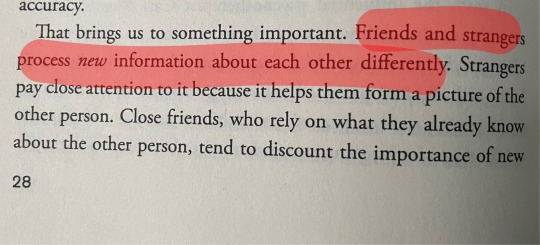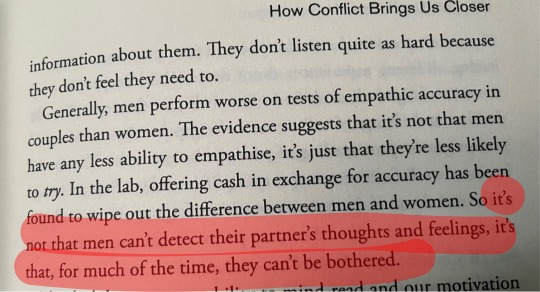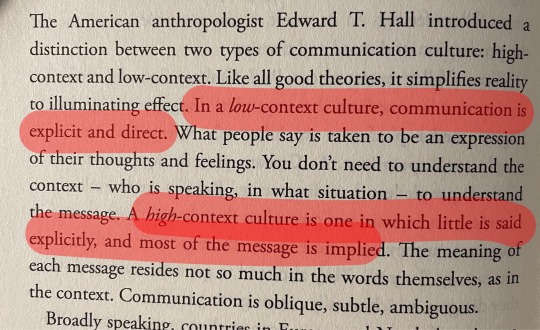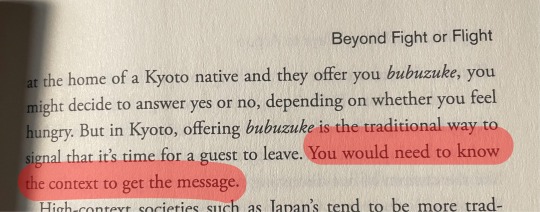Text
[Over the course of writing the book] “I've learnt that too much agreement is bad for us, and that we can only make the most of our differences when we disagree well.”
P. 4
0 notes
Text
“Our arguments might beabout the best way to run a project at work, or whether it's OK to eat meat, or which of us is drawing too heavily on the joint account. But they do have something fundamental in common… and it's this: they are, at least in part, related to how we feel about each other.”
P. 4
0 notes
Text
“One of Ickes major findings about mind-reading [empathy, in the study] is that people are really bad at it. On a scale from 0 - 100, the average empathic accuracy score was 22 and the best scored 55.”
“… strangers are quick learners. Ickes found they got better at reading each others’ minds the more information they exchanged, especially when the information established some common ground or shared interest.”
P. 28
The more we know we have in common, the more empathy we’ll have for one another and the better we’ll be able to communicate with high context.
0 notes
Text
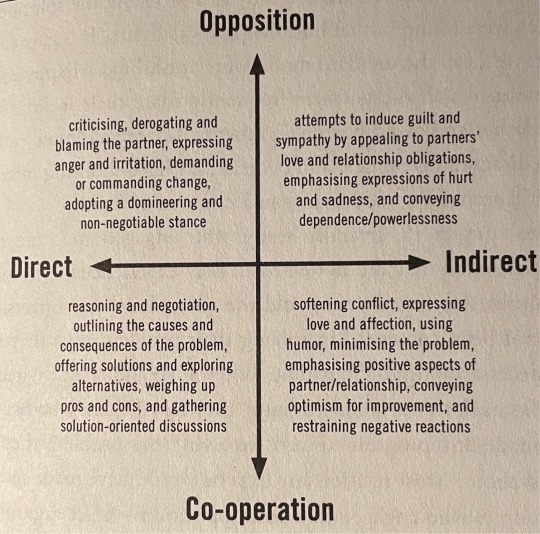
Communication categories during a conflict or difficult discussion.
(Indirect Opposition is passive aggression)
P. 25
0 notes
Text
“Imagine a culture where argument is viewed as a dance: a collaborative performance, with the aim being to conduct it in the most satisfying and elegant way.”
P. 22-23
0 notes
Text
“The costs and benefits of disagreement are not symmetrical. The benefits of avoiding disagreement, or any kind of conflict, are immediate – you can leave the room, literally or psychologically, and instantly feel more relaxed. The benefits of having disagreements are not always apparent in the moment, compared to the discomfort associated with them; they tend to be longer term, cumulative and, ultimately, bigger.”
P. 20
0 notes
Text
“A study conducted in the USA and Canada suggested that witnessing “immoral acts” [eg., that prompt a “this is utterly disgusting; he’s evil” response] accounts for less that 5 percent of our daily experiences – but on the internet, we come across them all the time... this is partly because content that outrages is more likely to be shared... Nuance, reflection, and mutual understanding are not just casualties of the crossfire but necessary victims.”
P. 16
0 notes
Text
“This aversion to disagreement is steeped in evolutionary history... [Challenges to a political belief] trigger the same areas of the brain that activate in response to physical threat... Thats why our bodies react as they do: the chest tightens, the pulse rate quickens.”
P. 15
0 notes
Text
“With less context to guide our decisions, the number of things on which ‘we all agree’ is shrinking fast.”
P. 14
0 notes
Text
“Different countries ... have different communication cultures, but nearly all of them are subject to the same global vectors of commerce, urbanization, and technology – forces that dissolve tradition, flatten hierarchy, and increase the scope for arguments. It’s not at all clear that we are prepared for this.”
P. 13
0 notes
Text
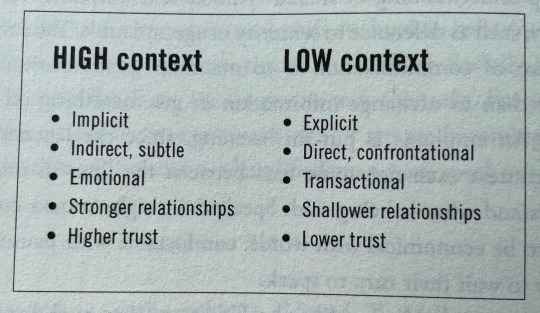
High context and low context cultures.
Low context: communication is explicit and direct. You don’t need context to figure out what’s being said, it’s all right there.
High context: little is said explicitly, and most of the message is implied. Communication is oblique, subtle, ambiguous.
P. 10-12
0 notes
